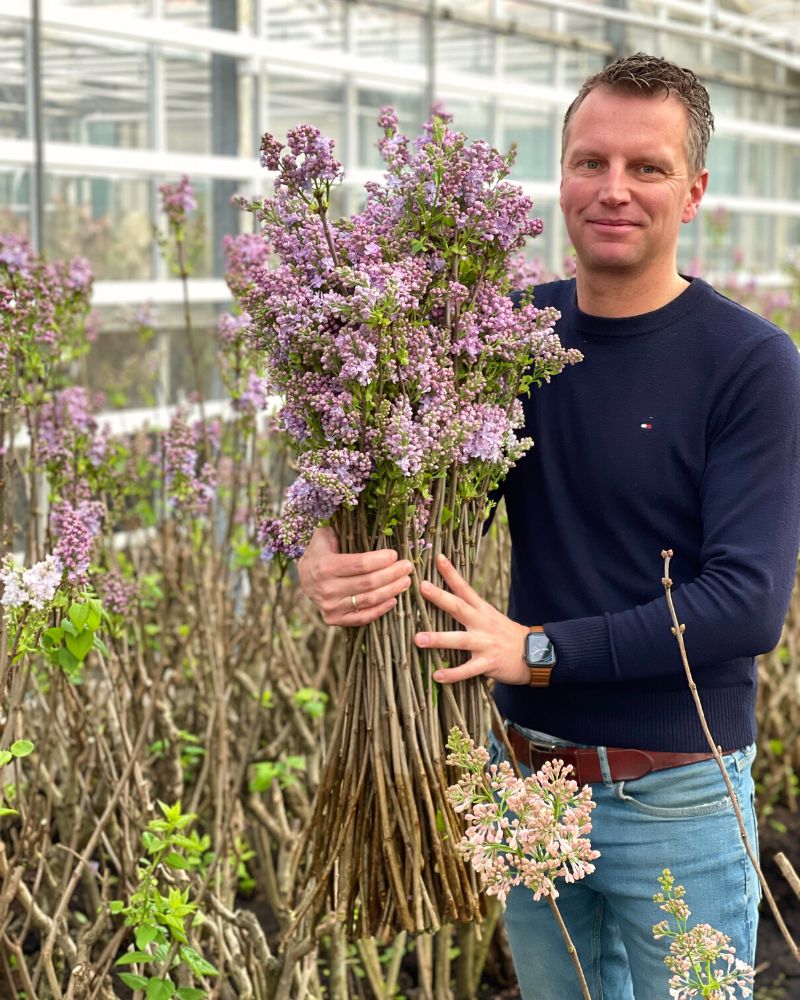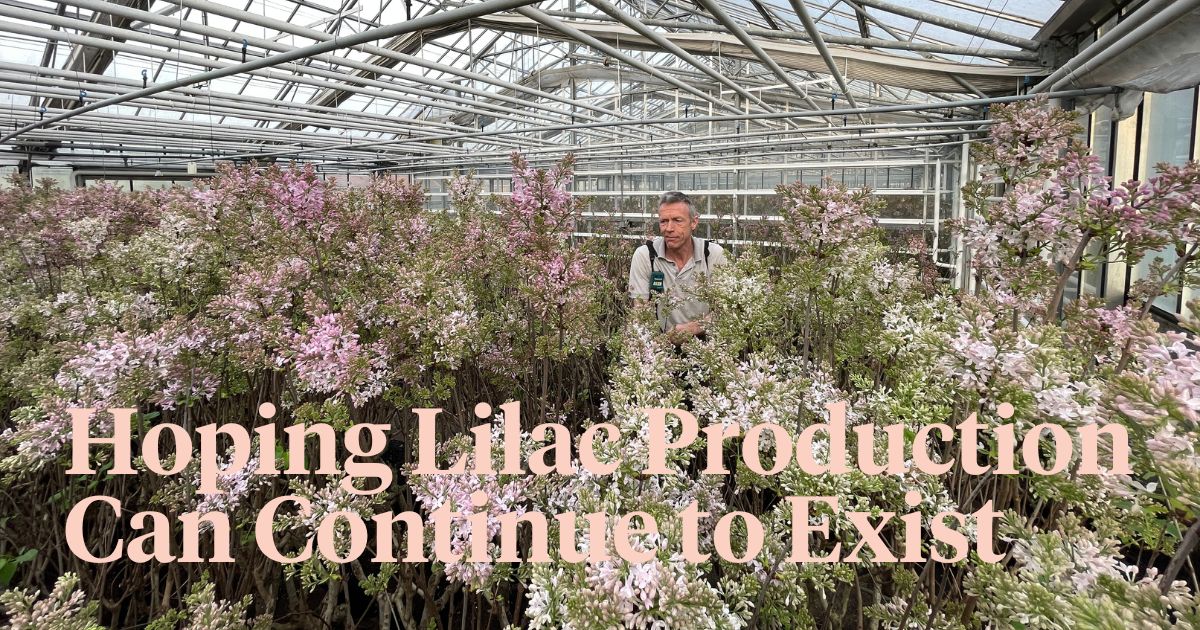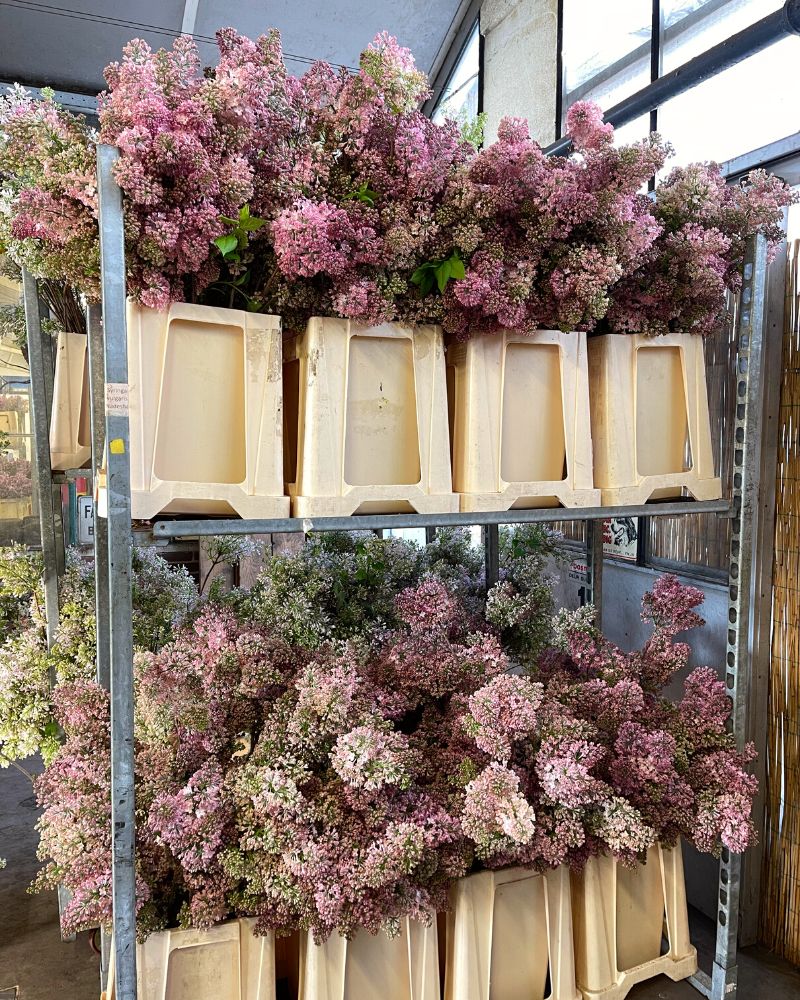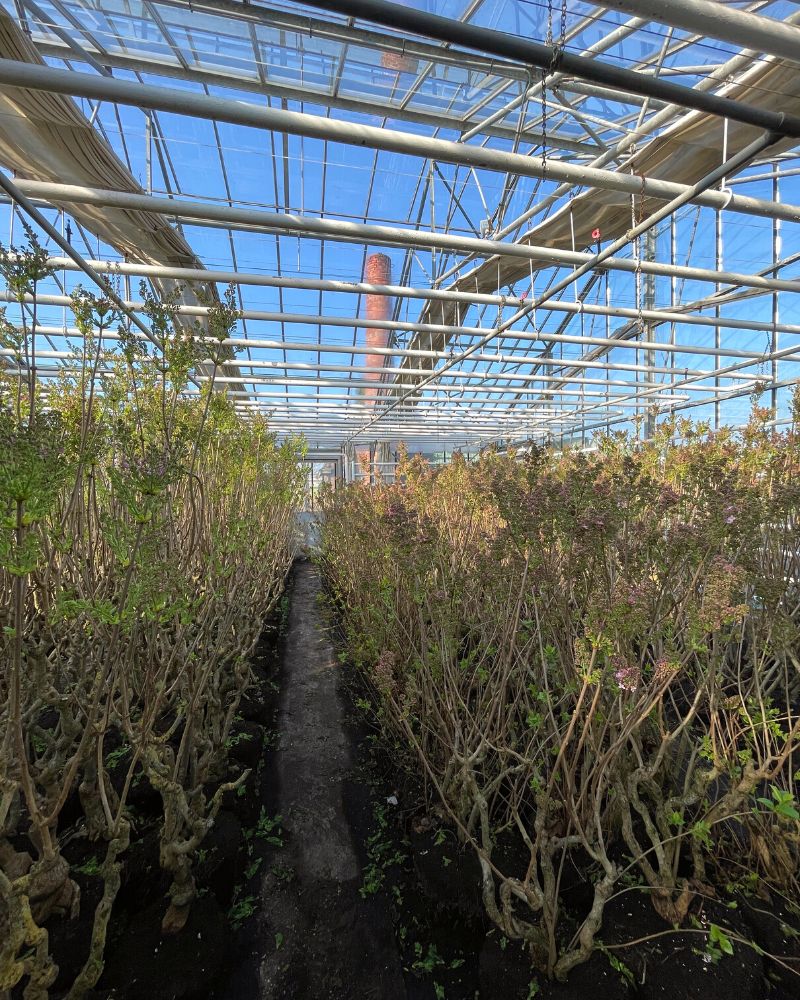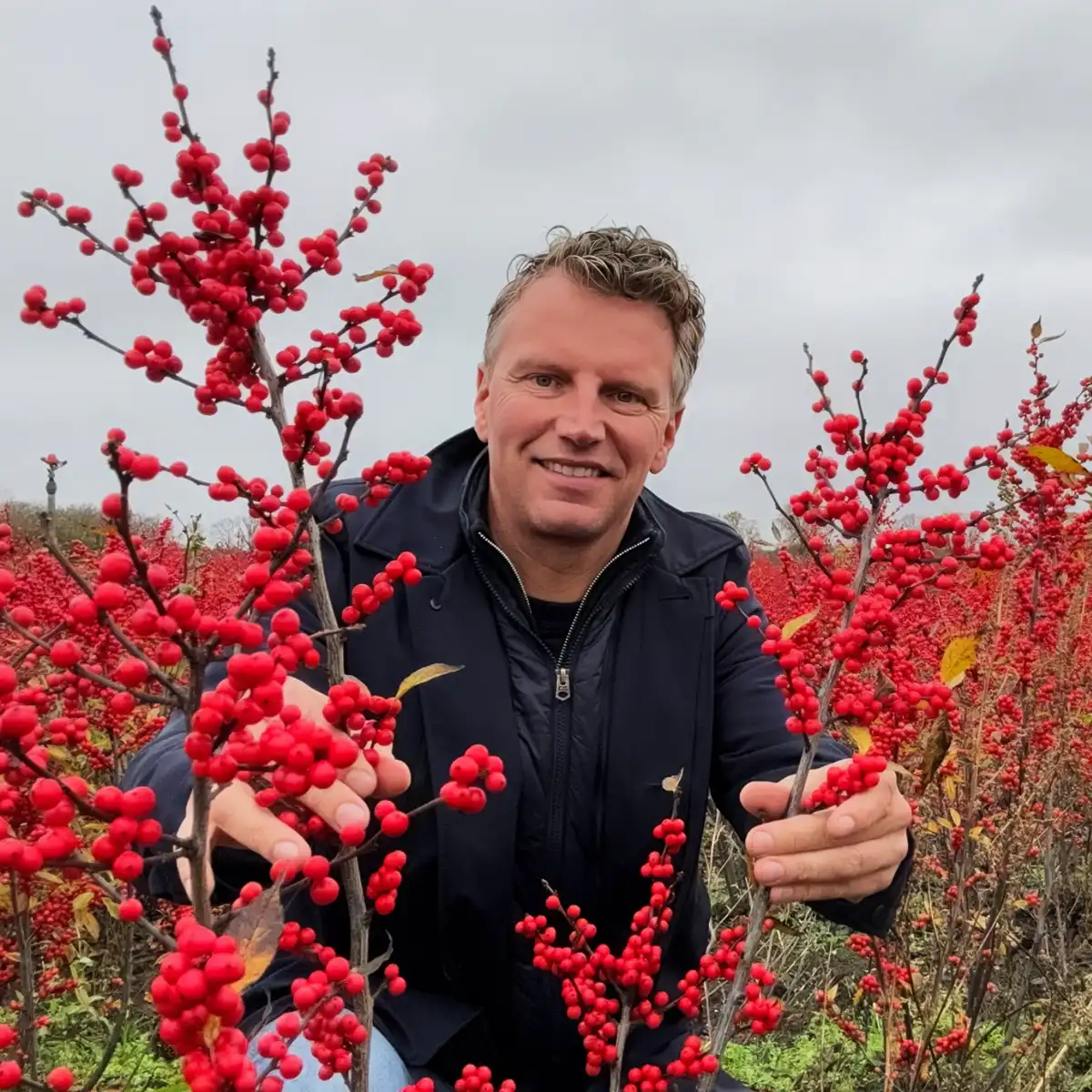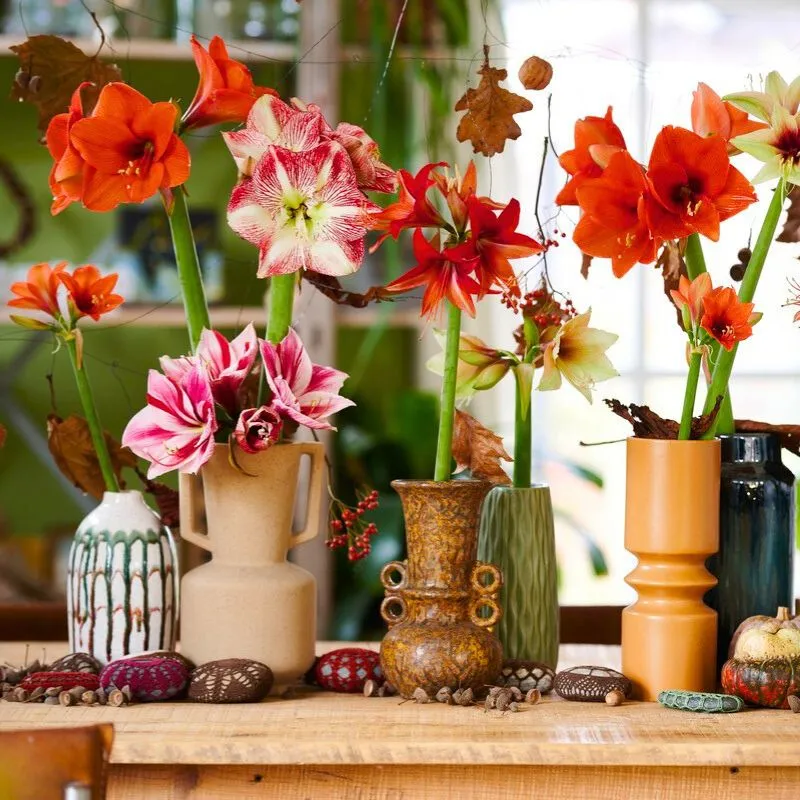This time I had the honor to visit a company that specializes in a flower that has a very long history in the Netherlands. Lilacs are something special. Not only as a flower but also as a product that demands hot work. My host today is Jan ten Hoeve, 53 years old, married, has two children, and in the company 'De Seringen Specialist' since '96. Jan has been involved in the Lilac business since the age of 17 through an internship and then married to the previous owner. 'Seringen' is the Dutch word for lilacs.
The Lilac Cultivation
Lilacs are shrubs that grow in any kind of soil. So, one sees them all over the world in private and public gardens and parks. They naturally grow as big shrubs about four meters high. In all sorts of colors, with single and double flowers. It is possible that the lilac shrub that is growing in your garden is similar kind growers use for forcing. Forcing means you try to grow flowers on the plants at an earlier or later stage in the season than the lilacs flowers naturally.
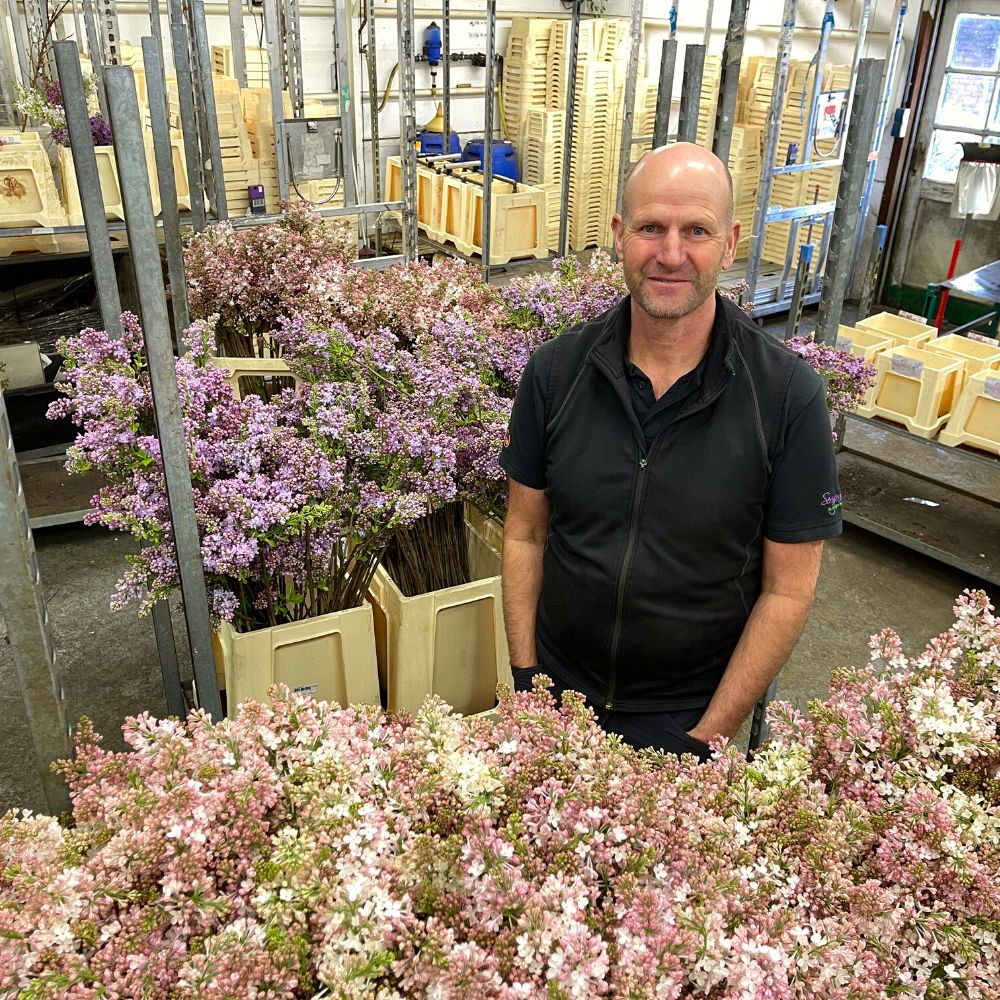
The lilac culture is one of every two years, which means growers harvest flowers once every two years from a shrub. They have to prune the shrubs so they remain low and make long straight flower stalks. The big thing is that they have to remove the shrubs from the soil and get them to bloom in a warm greenhouse (forcing the flower to bloom). This is, as you can imagine, some hard work. You can read more about the whole process and the company here: 'Lilacs, Dutch Pearls by Tradition'.
History of the Nursery
Klaas Joren, the previous owner of De Seringen Specialist, was the 3rd generation of the nursery. Early 20th century they grew lilacs in winter, next to geraniums, petunias, hydrangeas, and other small crops in other seasons throughout the year. From the year 2000, they only grew lilacs and viburnum. And since the last 10 years only lilacs, some 25 to 30 different varieties. That is why they are known as De Seringen Specialist.
Origin & Breeding
Lilacs come originally from Europe and Eastern Europe, the flowering time is early May. In the past, tulips, lilacs, and carnations were the only products in the winter, before imports came. The breeding of lilacs is always a gamble. It takes many years before you know a variety is good enough. De Seringen Specialist works together with Pico Plant in Germany, the preference is given to tissue culture. Start with rootstocks and then graft or bud yourself.
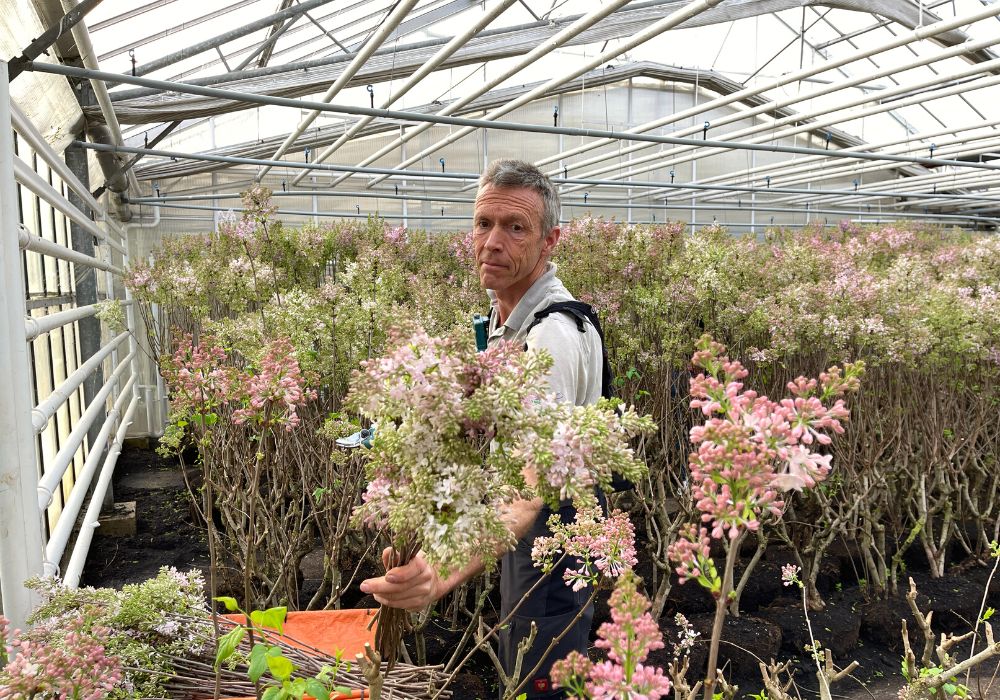
Proud Grower
Jan ten Hoeve is particularly proud of the wide range, which is developed in a way that you have the same quality every day. And a specific variety is then available for longer. By growing smaller batches per greenhouse and small quantities per bucket (20/30 stems), it is easy to access for every buyer. The trade and flower designers love it! Because they are really close to the Royal FloraHolland flower auction in Aalsmeer, they can provide daily supplies of lilacs, making them a loved flower to floral designers to work with. They can count on availability, and many are surprised that so many different colors are available.
Lilac 'Buchner' double with amazing flowers, the real milka color, is Jan's favorite.
His future dream is that lilac cultivation can continue to exist because it has no succession itself, and nowhere in the world is this done, except in the Aalsmeer region in the Netherlands. He hopes it will continue And grow old healthy with the family.
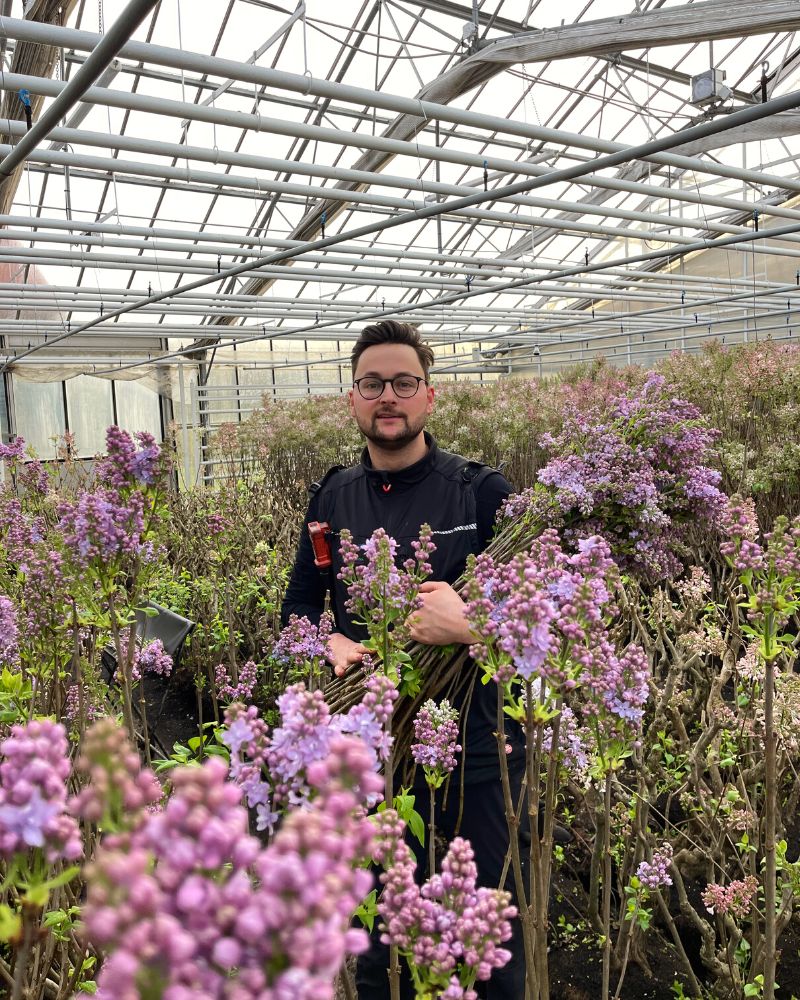
The Treatment of Lilacs
Treatments are very important for long-lasting lilacs: in the past, lilacs were hard to keep, having a vase life of just a few days. However, this is no longer the case thanks to Chrysal Syringa now helping Lilacs last up to two weeks. All of the Lilacs are supplied with a sachet of Chrysal Syringa to prolong the life and enjoyment of the flowers.
But:
It's always the case that nature will have an effect on the longevity of the Lilacs. When there is more frost during winter the longevity will decline. Frost has a negative effect on the moisture in the stems and the buds. And all of this also depends on the different varieties of Lilacs, some do have more 'trouble' than others. It can happen even when Chrysal Clear is used some stems will droop. Now, often the lilacs are the longest-lasting in a vase.
